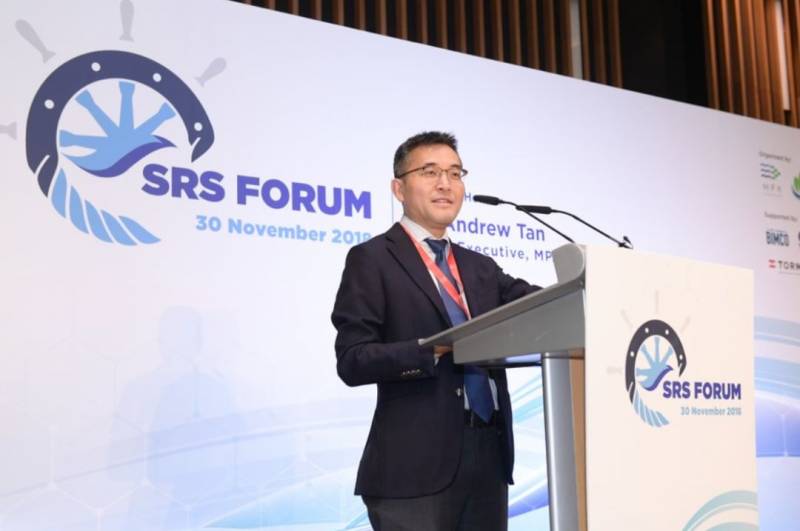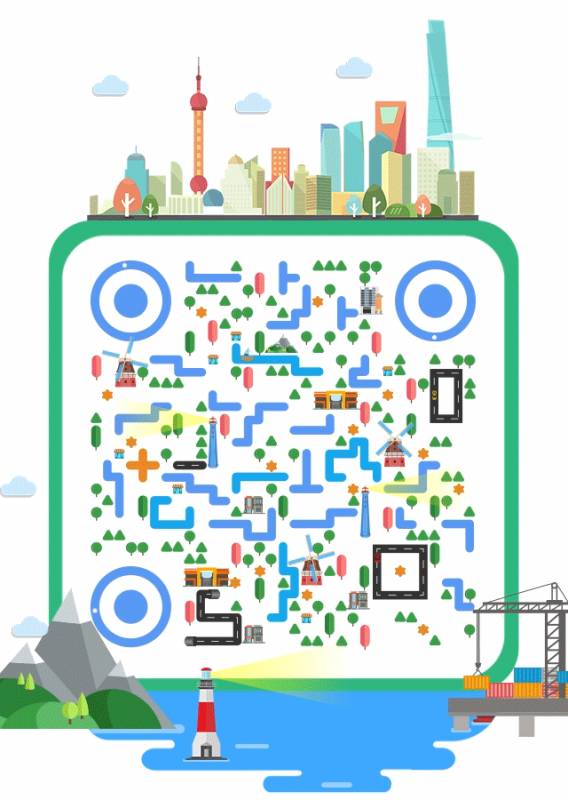Seaway海事新聞12月3日訊,新加坡海事港務局(MPA)上周五(11月30日)表示,從2020年1月1日開始禁止船舶排放開環洗滌塔的“廢水”。
開環洗滌器在新加坡這個世界級的燃油供應中心被禁止,對于已經在廢氣淨化系統上投入數百萬美元的船東來說,這無疑是一個挫折。
此舉旨在幫助這個世界上最繁忙的港口應對2020年生效的IMO新規,並促使船舶使用更加清潔的燃料。
“爲了保護海洋環境並確保港口水域的清潔,將禁止船舶把開環洗滌器的洗滌水排放到新加坡水域。”新加坡港務局(MPA)CEO Andrew Tan在一次活動中表示。
“裝有混合洗滌器的船舶將被要求切換到閉環運行模式,”Andrew Tan說,新加坡將提供設施收集這些因運行洗滌器而産生的廢棄物。
關于新加坡港務局(MPA)這段有關開放式洗滌塔廢水排放的原文是:
Preparing SRS for the IMO 2020 Fuel Oil Sulphur Limit
7 Let me now touch on the impending environmental regulations affecting the industry, in particular the IMO 2020 Fuel Oil Sulphur Limit, and how we are working with our stakeholders to be prepared for its implementation.
8 As you are aware, come 1st January 2020, all ships are required to use compliant fuel oil of not more than 0.5 per cent sulphur content. In addition, ships are not allowed to carry non-compliant fuel oil from 1st March 2020. The use and carriage ban of non-compliant fuel do not apply to ships that are fitted with abatement technology such as scrubbers or granted with exemptions for trial of such technology.
9 To help prepare the industry for the IMO 2020 Fuel Oil Sulphur Limit, we have developed a comprehensive action plan. Working together with the Singapore Shipping Association (SSA), we have published two technical guidance booklets, one for Singapore-registered ships and another one for ships calling at the Port of Singapore [Show booklets]. The booklets provide detailed guidance and best practices for ships to comply with the IMO 2020 regulations, as well as the requirements and procedures that ships have to abide by when calling at Singapore. Hardcopy of these guidance booklets are available here today. You may also download the electronic versions from our MPA website.
10 In addition to these guidance booklets, we will be issuing another set of guidance by the second quarter of 2019, detailing Singapore’s readiness for the IMO 2020 regulations, covering topics such as fuel availability in Singapore, reception facilities for scrubber residues, and enforcement measures, bearing in mind the need to ensure there is no disruptive impact to shipping, which we are highly conscious of.
11 We will also be organising various engagement platforms to address any concerns that the industry may have in the run up to 2020 and beyond, and to update you of any new developments. Next year, we will hold a technical workshop jointly with SSA for SRS operators, and also an MPA-SSA industry panel discussion. Additionally, we will be engaging like-minded ports and maritime administrations to share best practices in the implementation of this regulation. This topic will also be further discussed at SRS Forum 2019.
12 As a major bunkering hub, we are working closely with our bunker suppliers to ensure that there will be adequate supply of compliant fuel oil in Singapore well in advance of 2020. We will produce a list of suppliers that are able to supply compliant fuel by the middle of next year.
13 To protect the marine environment and ensure that the port waters are clean, the discharge of wash water from open-loop exhaust gas scrubbers in Singapore port waters will be prohibited. Ships fitted with open-loop scrubbers calling at Singapore will be required to use compliant fuel. Ships fitted with hybrid scrubbers will be required to switch to the closed-loop mode of operation. Singapore, as a party to MARPOL Annex VI, will be providing reception facilities for the collection of residues generated from the operation of scrubbers.
14 SRS operators are encouraged to plan ahead and ensure compliance with the IMO 2020 regulations in order to safeguard Singapore’s Quality Flag status.
就目前的情況來看,新加坡港口作爲全球船舶燃料主要加油的中心,當地港務局將緊密和燃料加注供應商聯系,並在明年發布一份合規的加油商名單,同時,對安裝開放式的脫硫設施的船舶,MPA要求其按照IMO要求切換符合規定的燃料油,對安裝混合式的脫硫設施船舶,要求其切換至閉合式。
部分網友如上表達了自己的觀點。
對此,國內的部分脫硫設備廠家和一些業內人士也紛紛表達了自己的看法與看法。
上海藍魂的相關人士表示,業內需要順應法規,各個國家設立自己的控制排放區是遲早的事情。對于船東是否會因此不考慮脫硫塔而采用低硫油,該人士表示,畢竟船舶是在全球航行,不會因爲一個國家設立了法規就全部使用低硫油,相反,法規越嚴格,市場應該更火爆。
上海彙舸的相關人士表示,新加坡港口並不是第一個對脫硫汙水排放有規定的區域,用混合的或換油就可以了,其實船東早就在考慮了。關鍵需要解決公海排放脫硫汙水的情況,並且很多船東在選擇安裝脫硫塔之前就已經考慮到了類似新加坡港口這種嚴格的排放規定。而他們認爲脫硫塔安裝的市場才剛剛開始起步。
江蘇優拿大的相關人士表示,對新加坡港口的新規的其實是情理之中,意料之外。嚴禁濕法外排水是情理之中,新加坡宣布是意料之外,本來他們估計時挪威或芬蘭或北美在2019年初宣布。很簡單,海洋經濟的體量遠遠大于航運經濟的體量。現在不可能在出現頭疼醫頭,腳痛醫腳的事情。將大量含有有害物質的廢水排放到海洋,對全球經濟、環境、大氣等都是不可逆轉的損傷。該人士認爲,脫硫本來就不用采用的技術,只是因爲政策的突發性導致了航運公司的盲目性,對于船東來說,脫硫是不産生任何經濟效益的,因此選用標准一定是:便宜、合規。因此,相關政府機構和第三方必須切實看到危害從而從源頭上給予制止。否則,今天省下來1美元,明天要花費千倍甚至萬倍的代價都無法修複海洋生態環境。
DNVGL船級社有關人士表示,目前全球已經有一些對汙水排放采取更加嚴格對待,即便是閉合式也不會考慮,目前主要需要考慮的是在大洋航行過程中排汙的問題解決,並且水域的淡海水選擇上,也會對洗滌塔的形式有所要求,近期DNVGL也在對環境與船舶航行的相關問題有一個深入的探討。
有挪威船東人士表示,在脫硫塔的問題上,總能看到一些奇葩的言論和觀點,尤其是標榜著道德至上的人士,總想扳倒脫硫塔、尤其是開放式脫硫塔的主張派。曾幾何時,航運業的道德基准怎麽提高得那麽明顯?不得不懷疑他們對IMO 2020的實施背景的了解,片面和幼稚地認爲這是一個簡單的汙染源轉移。然而,IMO 2020的出台背景中一項最爲重要的因素是人類受大氣汙染而引發的疾患率上升,從而要采取措施降低大氣汙染。開式脫硫塔確實將部分汙染源轉移到了海洋,但巨大的海洋體所附屬的自淨功能(化學自淨)可以將這些洗滌水的排放忽略不計。或許在消除人類健康威脅和海洋環境威脅二選一時,理智的選擇是消滅人類而守住海洋環境嗎?有機的發展是不斷提升開發脫硫裝置的技術,有效配置硫排放物回收體系和網絡,這是一個發展的過程。安裝脫硫塔的確有商業驅動的因素,但不至于上升到道德層面。如果真要以道德基准來衡量,那麽道德主張派從現在開始就應該放棄HFO,而選用0.1%硫含量的低硫輕柴油或者LNG動力,哪怕市場開始供應0.5%硫含量的Compliant Fuel時。用道德綁架航運時,那麽航運業離死期也就不太遙遠了。
對此,你是怎麽看待未來船舶在脫硫塔安裝以及低硫油二者中如何選擇的,以及開放式、閉合式、混合式,或者其他形式的脫硫設備的觀點,歡迎留言區討論。
—END—



